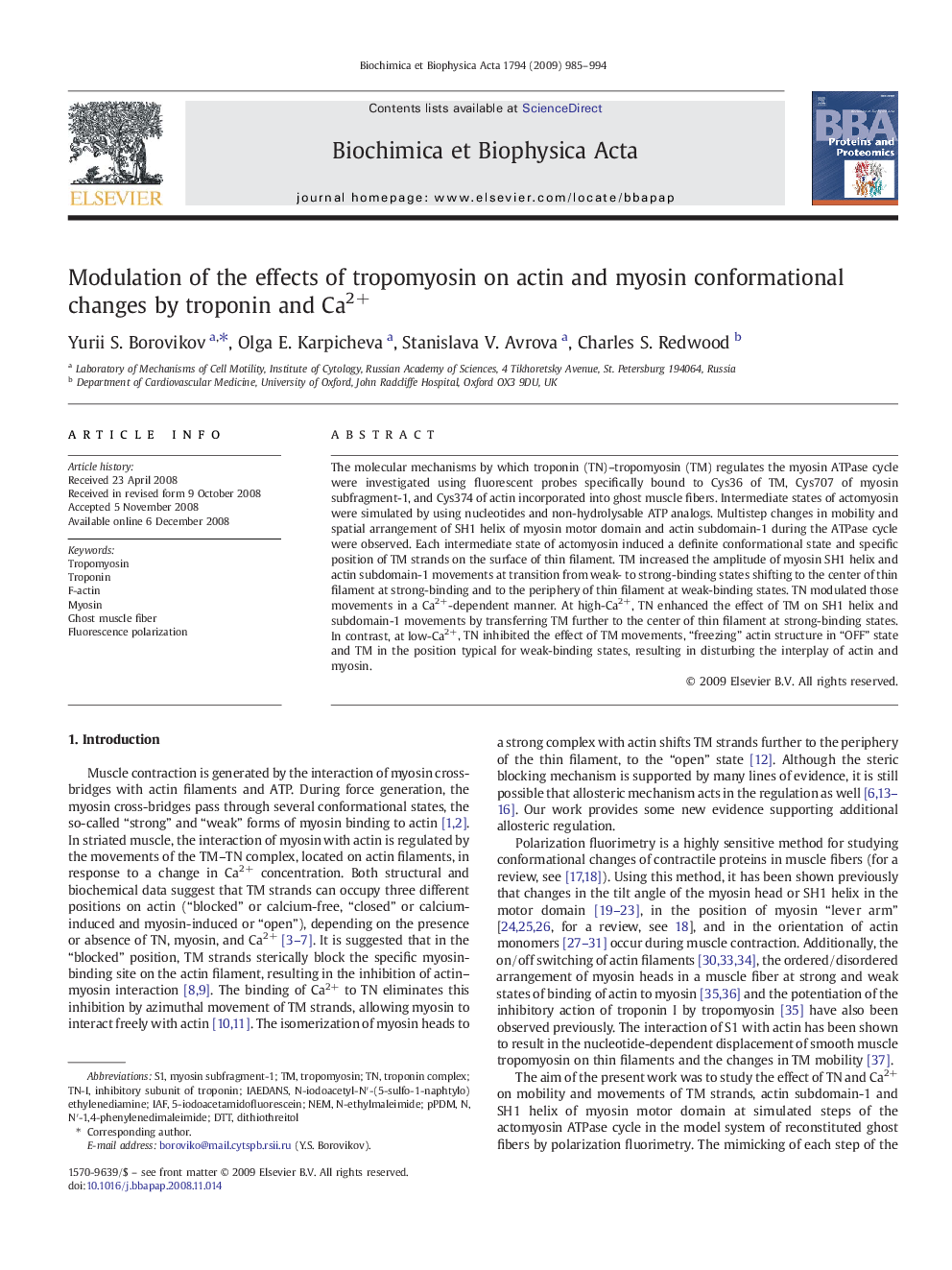| Article ID | Journal | Published Year | Pages | File Type |
|---|---|---|---|---|
| 1180259 | Biochimica et Biophysica Acta (BBA) - Proteins and Proteomics | 2009 | 10 Pages |
The molecular mechanisms by which troponin (TN)–tropomyosin (TM) regulates the myosin ATPase cycle were investigated using fluorescent probes specifically bound to Cys36 of TM, Cys707 of myosin subfragment-1, and Cys374 of actin incorporated into ghost muscle fibers. Intermediate states of actomyosin were simulated by using nucleotides and non-hydrolysable ATP analogs. Multistep changes in mobility and spatial arrangement of SH1 helix of myosin motor domain and actin subdomain-1 during the ATPase cycle were observed. Each intermediate state of actomyosin induced a definite conformational state and specific position of TM strands on the surface of thin filament. TM increased the amplitude of myosin SH1 helix and actin subdomain-1 movements at transition from weak- to strong-binding states shifting to the center of thin filament at strong-binding and to the periphery of thin filament at weak-binding states. TN modulated those movements in a Са2+-dependent manner. At high-Ca2+, TN enhanced the effect of TM on SH1 helix and subdomain-1 movements by transferring TM further to the center of thin filament at strong-binding states. In contrast, at low-Ca2+, TN inhibited the effect of TM movements, “freezing” actin structure in “OFF” state and TM in the position typical for weak-binding states, resulting in disturbing the interplay of actin and myosin.
